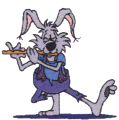
Music Theory & History ~ All about the Flute ~ Performing Advice�
�
Music Psychology ~ Teaching ~ Fun Stuff ~ Mostlywind ~ Links
�

Click on the Main Categories above to start your adventure.
Below are the Sub-Sections for this category.
[Flute Teaching - Level One] [Flute Teaching - Level Two] [Flute Teaching - level Three]
Following an HMI visit, it was suggested that we be more succinct in our expectations within our department.
Feel free to use and amend the material.�
(It would be helpful for me to have feedback if you do choose to use it!)
email: [email protected]
| SCHEME OF WORK: FLUTE LEVEL 3 (ADVANCED) |
| � |
KNOWLEDGE OF THE INSTRUMENT Pupils should be able to show a working knowledge of the following: * How to clean and maintain the flute * Tune the instrument precisely. * Know of basic repertoire * Know of the history and development of the flute. * Listen to and know of famous players, past and present. |
�
TECHNIQUE Pupils should be able to demonstrate the following: * Be able to demonstrate a good dynamic range * Secure breath control, and subsequently a good controlled vibrato * know all the trill fingerings * Ability to demonstrate advanced articulation i.e. double and triple, flutter tonguing. * Have a good warm-up technique based on long notes, designed to develop stamina, range and flexibility |
�
SCALES AND ARPEGGIOS Pupils should be able to play from music the following: * Major: All major scales - two octaves * Minor: All minor scales - two octaves * Arpeggios: As above * Chromatic: starting on any note - two octaves * Dominant 7th: in any key - two octaves * Diminished 7th: starting on any note - two octaves * Whole tone: starting on any note - two octaves * All scales should be played both tongued and slurred and should demonstrate fluency and an even sound production |
�
REPERTOIRE * Suitable repertoire should be drawn from recognised sources including tutor books, studies and pieces according to the pupil’s stage of development. * Suitable material maybe drawn from the various examination board syllabi. * Standard Repertoire, including concertos, should be introduced * Pupils should be encouraged to perform regularly and play in ensembles. * Performances should be expressive, showing individuality, demonstrating musical maturity through stylish and communicative playing and control of the instrument through fluency, accuracy, stamina and tone quality. |
�
THEORY Pupils should be able to demonstrate a knowledge of music theory relevant to the chosen repertoire. In addition, pupils must recognise and understand the following: * Notation: All treble clef notes (letter name and fingering), Bass Clef * Rhythm: All note values, The meanings of all time signatures, Double dotted notes * Key signatures: All major and minor keys, Be able to construct a major scale and know the significance of wholetones and semitones *Transposition: How to transpose a melody. *Terms: All commonly used abbreviations and Italian terms |
�
SIGHT READING Pupils should be prepared to play a short piece at sight: * in simple or compound time * in any key * any rhythm * including any common indication * To understand and be able to transpose a simple melody |
�
Aural Pupils should be able to: * Clap from memory the rhythm of a melody in simple or compound time * Beat time to a melody in simple or compound time * Sing or play back from memory a simple four note phrase * Recognise rhythmic or melodic changes to a four bar phrase played twice with the change being made in the second playing * Complete a simple four bar phrase by adding two further bars to the first two, creating a cadence in the home key. These aural skills should be developed as an extension of those attained at level 2. The importance of listening at all times should be emphasised. |
�
RECOMMENDED BIBLIOGRAPHY Study Book: Taffanel and Gaubert - Daily Exercises |
![]() E-Mail us your Links
E-Mail us your Links ![]()
Please return again soon.
Carole B. Miller
Copyright � 2002 [Mostlywind]. All rights reserved.
Revised: February 10, 2009
�
�